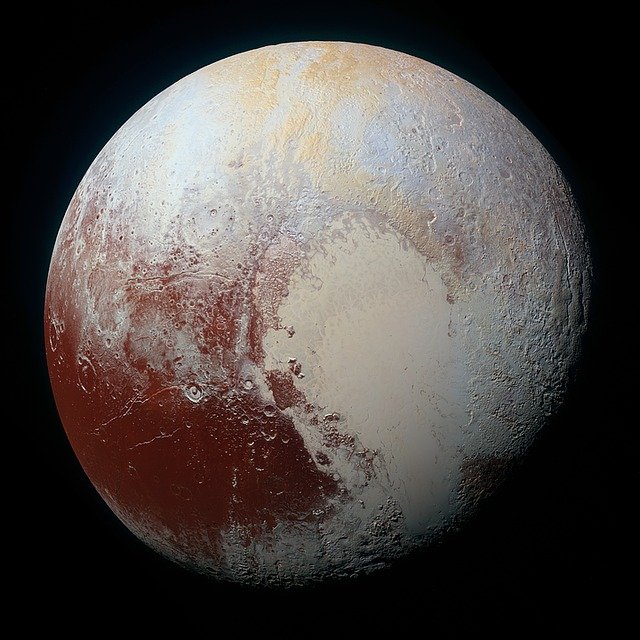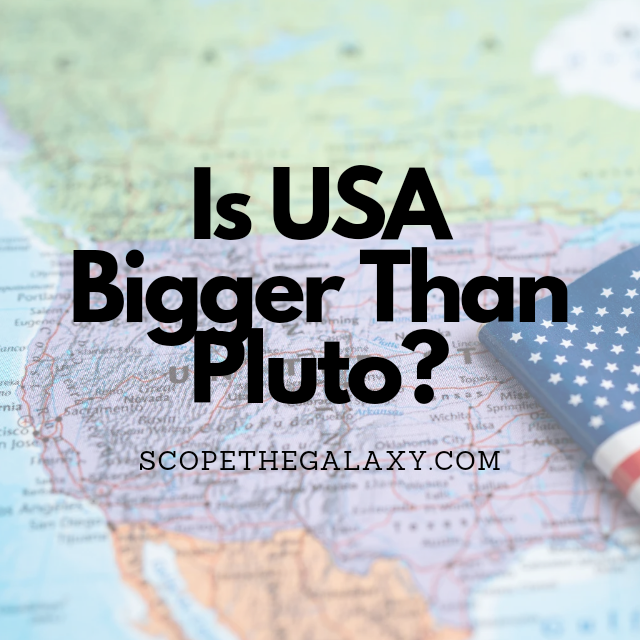*This post may contain affiliate links. This means we may make a commission if you purchase an item using one of our links*
Pluto has a surface area of 17.6 million km² with an estimated volume of 6.4 billion cubic kilometers whilst USA has a surface area of 9.834 million km² with an estimated volume of 393.34 million cubic km, making it far smaller than Pluto.
It is quite obvious that the flatter planes of the United states would be incomparable when in comes to the spherical nature of planets like Pluto. Nevertheless, for a more thorough breakdown of the size differences between the two, continue reading.
How Big Is USA?

The United States Of America has a total surface area of 9,833,516 sq. km, which makes it the third largest country in the world. It has a surface twice the area of the European Union’s land, and it is larger than the 107 smallest countries in the world combined.
The largest state in the USA is Alaska, possessing a surface area of 1,070,000 sq km; Texas and California follow at 430,000 sq km and 260,000 sq km, respectively.
These areas represent a flat two-dimensional area, but if we want to compare the size of the USA and the Pluto, then we need to know the volume.
Earth’s crust ranges from around 5 to 70 km in thickness. Generally, this crust is thicker under the continental land, which averages 40 km. Taking this average and multiplying it by the surface area of the USA, we can calculate that the rough volume of the USA is around 393,340,640 cubic kilometers.
This might sound like a lot, but it still falls short of a variety of other celestial objects where for example the Moon that has 21.9 billion cubic kilometers of volume. Even if we take Earth’s crust at its thickest (70 km), the total volume of the USA is still not comparable to most celestial bodies in outer space.
The actual crust will vary as the USA is a diverse country with dramatic variances in terrain. This country’s three most significant mountain ranges are the Appalachians, the Rockies, and the Sierra Nevada which adds altitude to its overall size but, it isn’t so as to make a major difference in the surface or volume of the country as a whole.
How Big Is Pluto?

Even though Pluto is a planet, which would have most individuals automatically assume it to be bigger than most of not all countries or continents on Earth, this won’t always be the case, especially when looking different measurements to determine ne its size.
For the longest time it was assumed that Pluto, the now officially recognized dwarf planet, had a surface area smaller than largest know country on Earth, Russia.
This is because prior to the newest mission in 2015, it was estimated to have a surface area of 16.7 million km² but the New Horizons launch, which observed the planet in more detail than even done prior, a more accurate calculation of the dwarf planets surface area came to be a good bit more at 17.6 million km².
Pluto does not have an excessive number of mountains on its surface nevertheless, some of its ice capped mountains are rather tall with certain mountain ranges reaching peaks as high as 3.55km.
In regards to the planets overall thickness, if we were to go from one end to the other, taking into account Pluto’s diameter of 2,376.6km, it would be many times the thickness of every country within Earth, whether it be Russia, Canada, the United States and so on.
All in all, even if purely based on surface area Pluto is similar to that of the largest continents on Earth and possibly even smaller than some of the continents on our blue sphere however, when thickness and volume comes into play, Pluto blows all of them out of the water.
After all a volume of 6.4 billion cubic km is nothing to scoff at, and hardly a number the majority if not all the flat land on Earth could even combine to beat.
Summary
Pluto may be the smallest official planet in our solar system, which is why it was demoted to dwarf planet status, where even a large variety of moons actually outsize it.
However, even with these size discrepancies and even taking into account how some continents outsize it when measuring by surface area, when the overall volume comes into play, it is ultimately absolutely enormous in comparison to USA, almost doubling its surface area and having a volume nearly 20 times it, if not more based on if the thickness of the crust were to be less than 70km.

